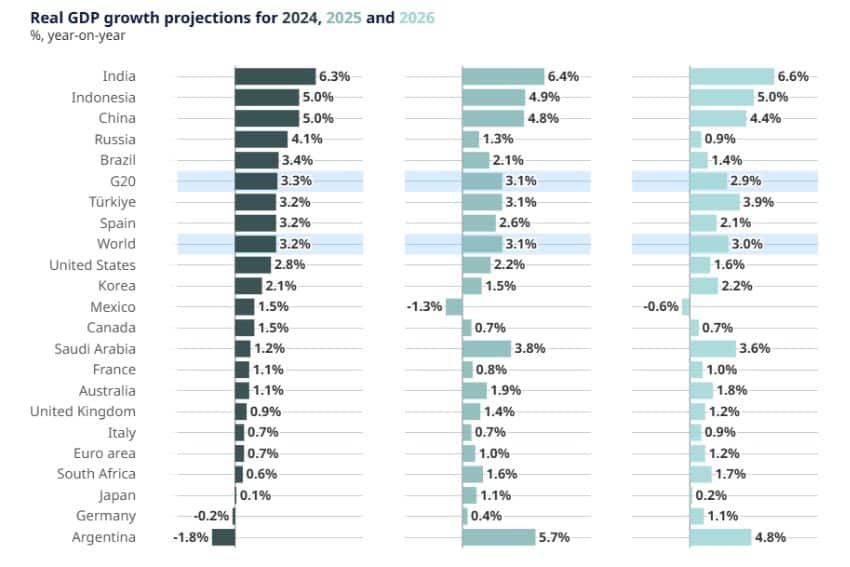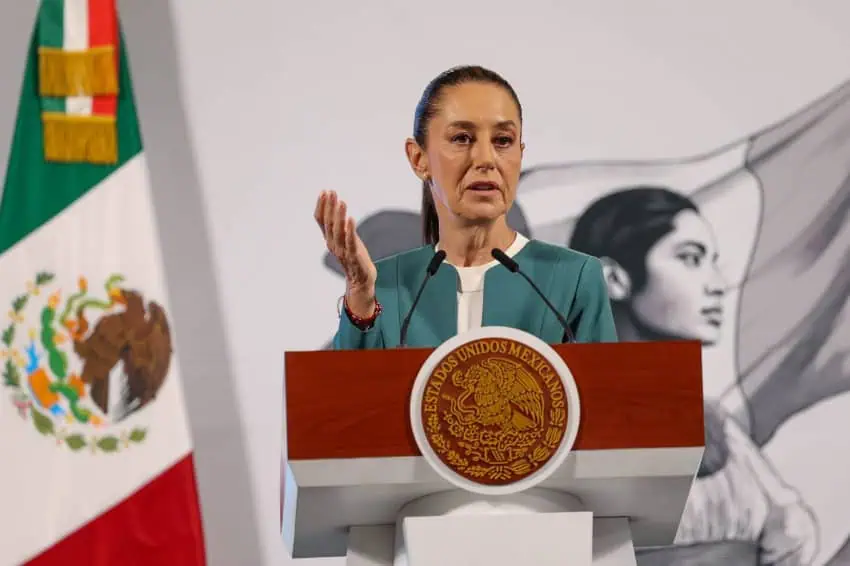Mexico’s economy could decline by 1.3% in 2025 and 0.6% in 2026, the Organization for Economic Cooperation and Development said in a new report issued Monday. That prediction makes Mexico the OECD’s only member country projected to enter a recession in those two years.
The OECD’s Interim Economic Outlook downgraded its GDP prediction for Mexico’s economy from its previous December growth forecast of 1.2% in 2025 and 1.6% in 2026.

The new prediction is based on the expectation that 25% U.S. tariffs on the importation of most Mexican goods will be implemented starting in April.
The OECD’s projections
The OECD’s current 2025 and 2026 predictions for Mexico’s inflation rate are currently:
- 2025: 4.4%
- 2026: 3.5%
Mexico’s annual headline rate in February was 3.77%, up from 3.59% in January, according to the national statistics agency INEGI. Month-over-month inflation was 0.28%.
Meanwhile, the OECD predicted Mexico’s year-on-year real gross domestic product (GDP) growth to be in negative percentages for 2025 and 2026:
- 2025 -1.3%
- 2026 -0.6%
The outlook also forecasts that the United States GDP will grow by 2.2% in 2025 and 1.6% in 2026, while Canada’s economy will expand by 0.7% in both years.
The organization predicts that all North American countries will experience lower economic growth than the average global GDP growth of 3.1% in 2025 and 3% in 2026.
Mexico’s response: ‘We have a plan’
Mexico’s President Claudia Sheinbaum questioned the role of international organizations such as the OECD in making these types of economic predictions.

“It doesn’t help that these organizations say, ‘We foresee that there may be a recession.’ Maybe they should suggest what to do instead of just releasing these news reports when we still don’t know if they will actually happen,” Sheinbaum said during her Tuesday morning press conference.
The president reiterated her government’s priority of strengthening investments and avoiding debt.
“Many countries opted for debt during the economic crisis resulting from the pandemic and are still experiencing the consequences of that decision. Here, [Mexico’s former] president López Obrador decided not to go into debt, to reduce spending, and with those savings, boost the economy from the bottom up. That is the project we have,” Sheinbaum stated.
Sheinbaum also emphasized the importance of her “Plan México” in attracting private investment and strengthening Mexico’s manufacturing sector.
“We have a plan that we are working intensively on. I meet once a week to review progress, and there is a working group of various ministries to expedite any stalled investment-related procedures. The goal is to stop importing and [instead] produce in Mexico through various means,” the president explained.
“And on the other hand, we have to wait until April 2nd to see how [the U.S. tariff issue] will play out for Mexico,” she added.
With reports from La Jornada and El Economista
